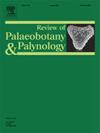他们是... ...屋顶上的草,在它长大之前就被炸了
IF 1.7
3区 地球科学
Q2 PALEONTOLOGY
引用次数: 0
摘要
考古发现的植物部分,特别是驯化的野生分类群及其衍生的驯化形式,在植物驯化研究中起着重要的作用。这些发现被用于模拟植物驯化,在明确或隐含的假设下,它们代表了过去的遗传、生态和文化状况和动态,并可能阐明植物驯化的机制。本文通过考虑对考古植物学发现的潜在贡献来讨论这种“代表性假设”,这种来源在过去没有深入研究-即“屋顶植物”。通过对以色列4个考古遗址的植物调查、考古植物学文献中提到的分类群与以色列近代传统考古生态学中所发现的分区分类群的比对,表明屋顶和建筑建筑群遗址的植物群应被认为是考古遗址中发现的考古植物学发现的重要来源。这些结果在黎凡特地区植物驯化的长期模型的背景下进一步考虑,重点是驯化前的栽培和关于栽培杂草的争论。本文章由计算机程序翻译,如有差异,请以英文原文为准。
They were… …the grass on the housetops and blasted before it be grown up
Archaeobotanical finds of plant parts, especially of wild taxa that were domesticated and their derived domesticated forms, unearthed from archeological sites assume an important role in plant domestication research. Those finds are used in modelling plant domestication under the explicit or implicit assumptions that they represent past genetic, ecological, and cultural situations and dynamics and may illuminate the mechanisms that underly plant domestication. This ‘representability assumption’ is discussed herein by considering the potential contribution to the archaeobotanical finds of a source that was not investigated in depth in the past – that is, ‘housetop plants’. The match between the lists from four botanically surveyed ruins in Israel, taxa mentioned in the archaeobotanical literature, and lists of segetal taxa in recent traditional argo-ecologies in Israel, shows that flora of housetop and ruins of built complexes should be considered as an important origin of archaeobotanical finds identified in archaeological sites. These results are further considered on the backdrop of the suggested protracted model of plant domestication in the Levant focusing on pre-domestication cultivation and arguments concerning weeds of cultivation.
求助全文
通过发布文献求助,成功后即可免费获取论文全文。
去求助
来源期刊
CiteScore
3.50
自引率
21.10%
发文量
149
审稿时长
6 months
期刊介绍:
The Review of Palaeobotany and Palynology is an international journal for articles in all fields of palaeobotany and palynology dealing with all groups, ranging from marine palynomorphs to higher land plants. Original contributions and comprehensive review papers should appeal to an international audience. Typical topics include but are not restricted to systematics, evolution, palaeobiology, palaeoecology, biostratigraphy, biochronology, palaeoclimatology, paleogeography, taphonomy, palaeoenvironmental reconstructions, vegetation history, and practical applications of palaeobotany and palynology, e.g. in coal and petroleum geology and archaeology. The journal especially encourages the publication of articles in which palaeobotany and palynology are applied for solving fundamental geological and biological problems as well as innovative and interdisciplinary approaches.

 求助内容:
求助内容: 应助结果提醒方式:
应助结果提醒方式:


